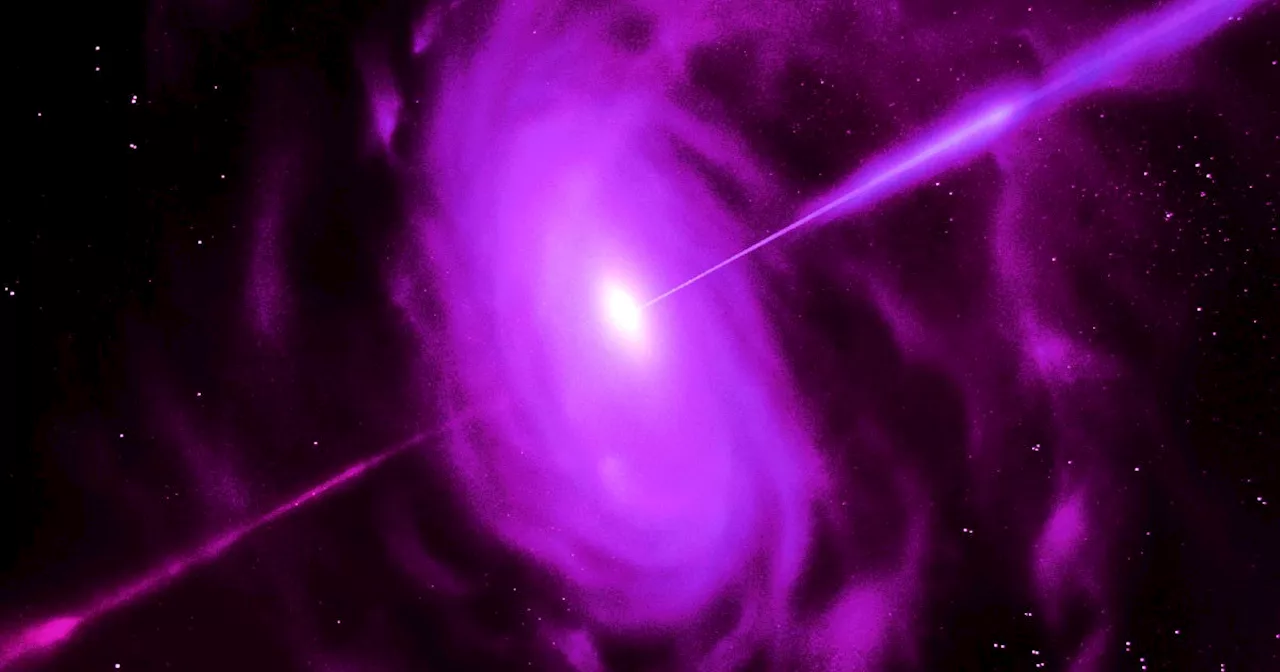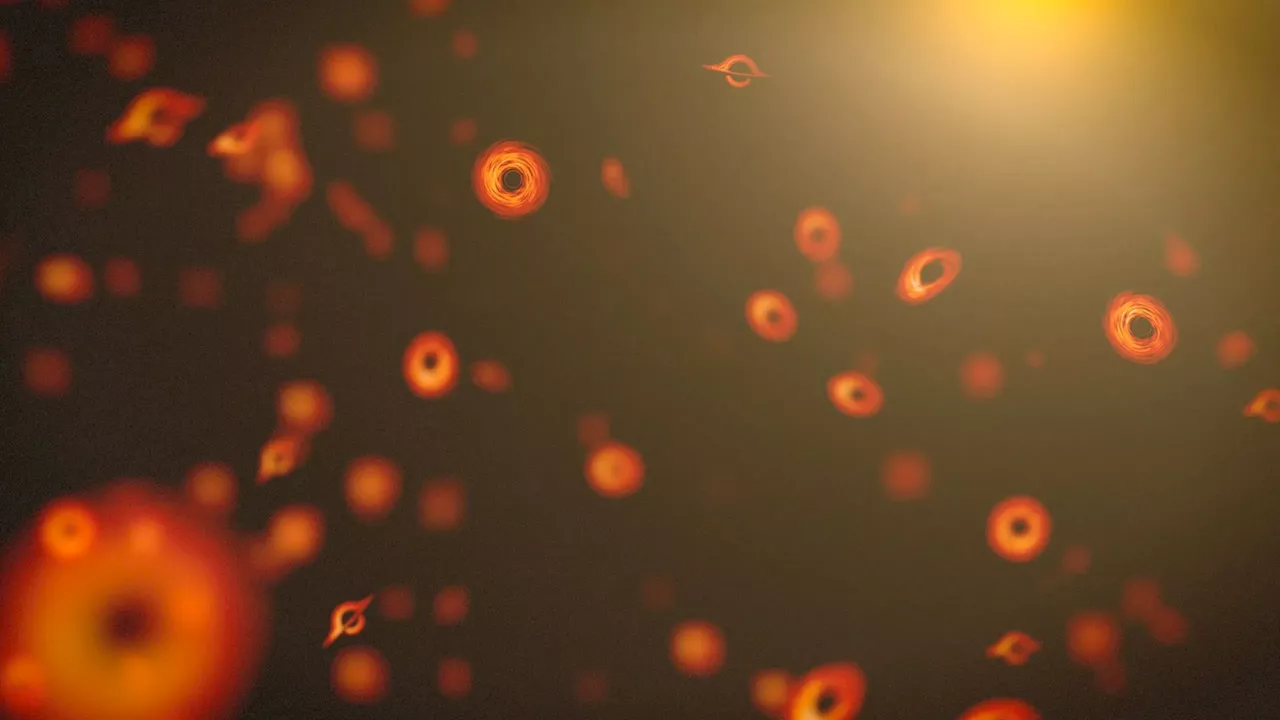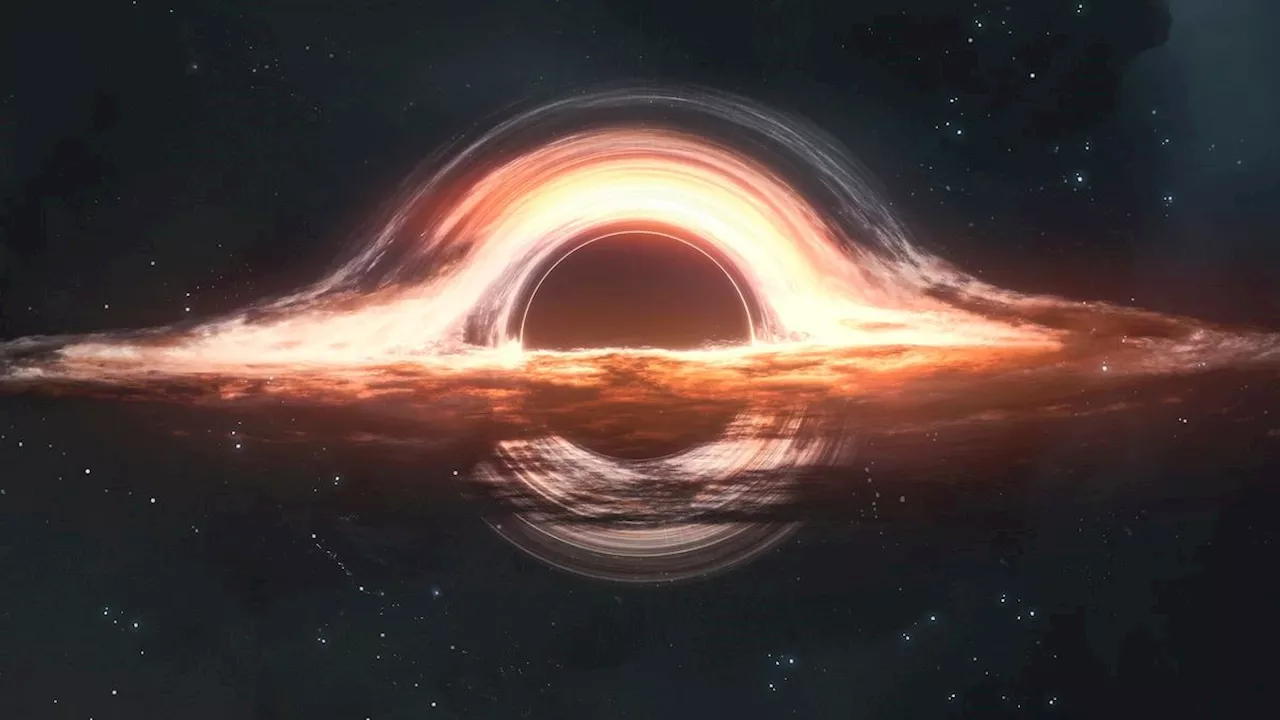Space and astronomy news
This artist’s illustration shows a red, early-Universe dwarf galaxy that hosts a rapidly feeding black hole at its center. Using data from NASA's JWST and Chandra X-ray Observatory, a team of U.S. National Science Foundation NOIRLab astronomers have discovered this low-mass supermassive black hole at the center of a galaxy just 1.5 billion years after the Big Bang. It is accreting matter at a phenomenal rate — over 40 times the theoretical limit.
The theory goes that black holes accrete material, often from nearby stars. However the theory also suggests there is a limit to how big a black hole can grow due to accretion and certainly shouldn’t be as large as they are seen to be in the early Universe. Black holes it seems, are fighting back and don’t care about those limits! A recent study shows that supermassive black holes are growing at rates that defy the limits of current theory.
Black holes usually form from the collapse of a massive star. The origin of their larger cousins, the supermassive black holes found at the centre of most galaxies, remains a mystery. Theories suggest they grew over billions of years by consuming stars, gas and maybe even other black holes. Others suggest they formed from the primordial conditions of the early Universe or maybe from dense clusters of hot young early stars.
The black hole known as LID-568 was detected by a team of astronomers led by the International Gemini Observatory/NSF NOIRLab astronomer Hyewon Suh. It was detected in images from the James Webb Space Telescope following on from assessment of galaxies from the Chandra X-ray Observatory’s COSMOS legacy survey. The galaxies observed are bright X-ray sources but not visible in optical or near-infrared surveys.
The discovery provides an excellent opportunity for astronomers to study black holes in the early Universe and in particular those that challenge the Eddington limit theory. It would however suggest that the outflows of energy are acting to release energy that has built up during extreme accretion periods. Follow up observations are required.
United States Latest News, United States Headlines
Similar News:You can also read news stories similar to this one that we have collected from other news sources.
 The Early Universe Was Absolutely Littered With Black Holes, Scientists FindScience and Technology News and Videos
The Early Universe Was Absolutely Littered With Black Holes, Scientists FindScience and Technology News and Videos
Read more »
 How primordial black holes from early universe could solve mystery of dark matterA recent study has proposed a new mechanism for the formation of primordial black holes that could provide answers about dark matter.
How primordial black holes from early universe could solve mystery of dark matterA recent study has proposed a new mechanism for the formation of primordial black holes that could provide answers about dark matter.
Read more »
 GoPro Hero 12 Black Sees Huge Price Drop in Early Black Friday OffersAmazon has the rugged and compact GoPro Hero12 Black action camera discounted to just $300 for the time being.
GoPro Hero 12 Black Sees Huge Price Drop in Early Black Friday OffersAmazon has the rugged and compact GoPro Hero12 Black action camera discounted to just $300 for the time being.
Read more »
 Black holes could be driving the expansion of the universe, new study suggestsBen Turner is a U.K. based staff writer at Live Science. He covers physics and astronomy, among other topics like tech and climate change. He graduated from University College London with a degree in particle physics before training as a journalist.
Black holes could be driving the expansion of the universe, new study suggestsBen Turner is a U.K. based staff writer at Live Science. He covers physics and astronomy, among other topics like tech and climate change. He graduated from University College London with a degree in particle physics before training as a journalist.
Read more »
 NASA peers into the blistering hot plasma swirling around 12 black holesConor Feehly is a New Zealand-based science writer. He has earned a master's in science communication from the University of Otago, Dunedin. His writing has appeared in Cosmos Magazine, Discover Magazine and ScienceAlert.
NASA peers into the blistering hot plasma swirling around 12 black holesConor Feehly is a New Zealand-based science writer. He has earned a master's in science communication from the University of Otago, Dunedin. His writing has appeared in Cosmos Magazine, Discover Magazine and ScienceAlert.
Read more »
 Evidence mounts for dark energy from black holesResearchers have strengthened the case that matter becomes dark energy when massive stars collapse and become black holes.
Evidence mounts for dark energy from black holesResearchers have strengthened the case that matter becomes dark energy when massive stars collapse and become black holes.
Read more »
